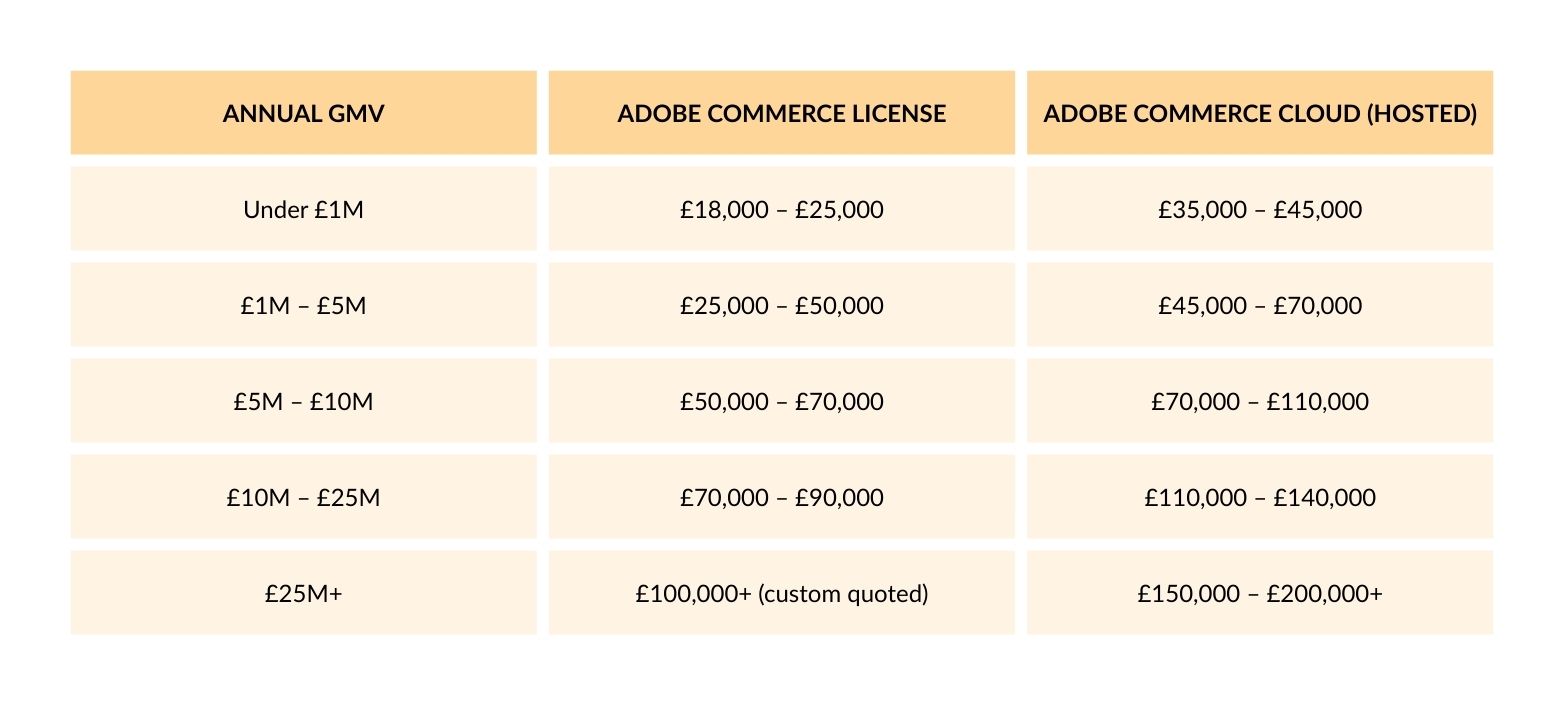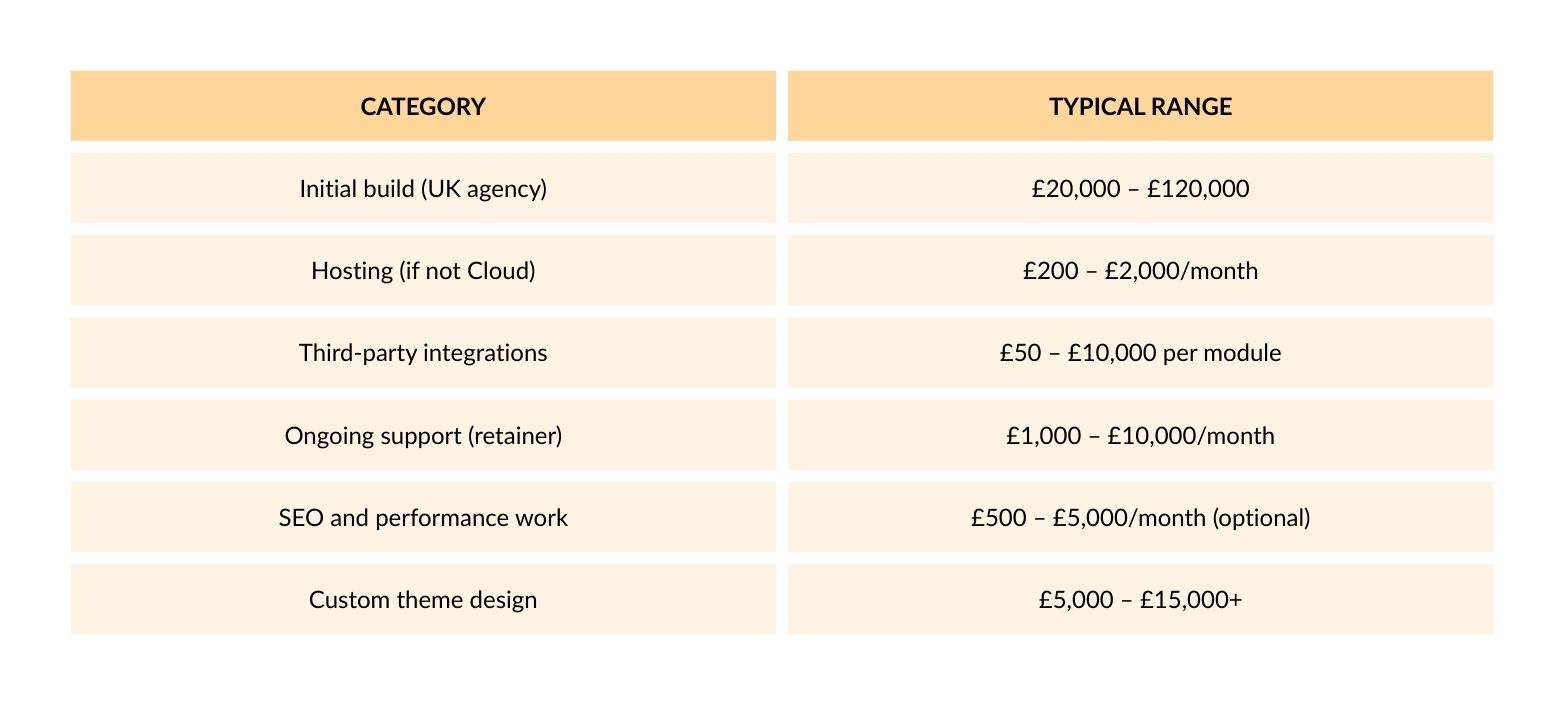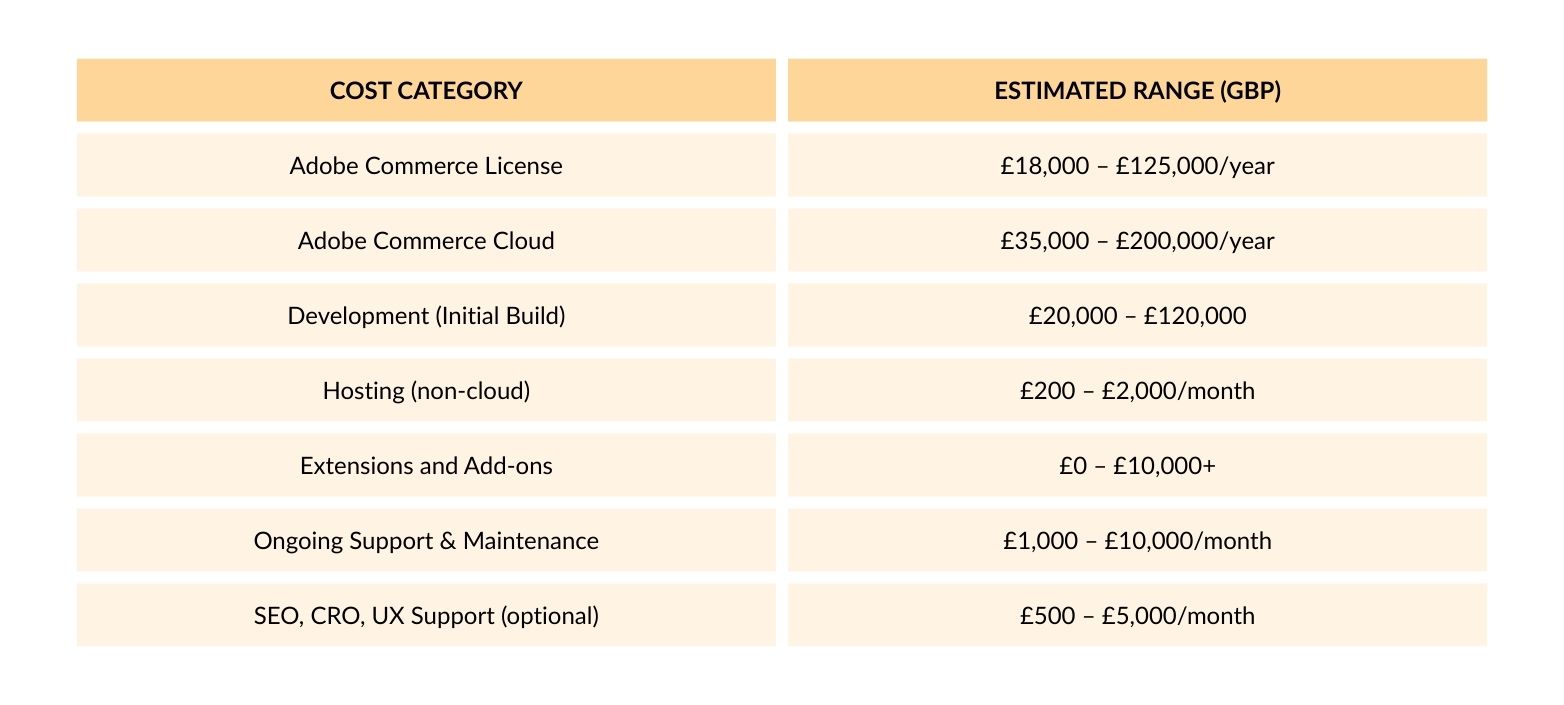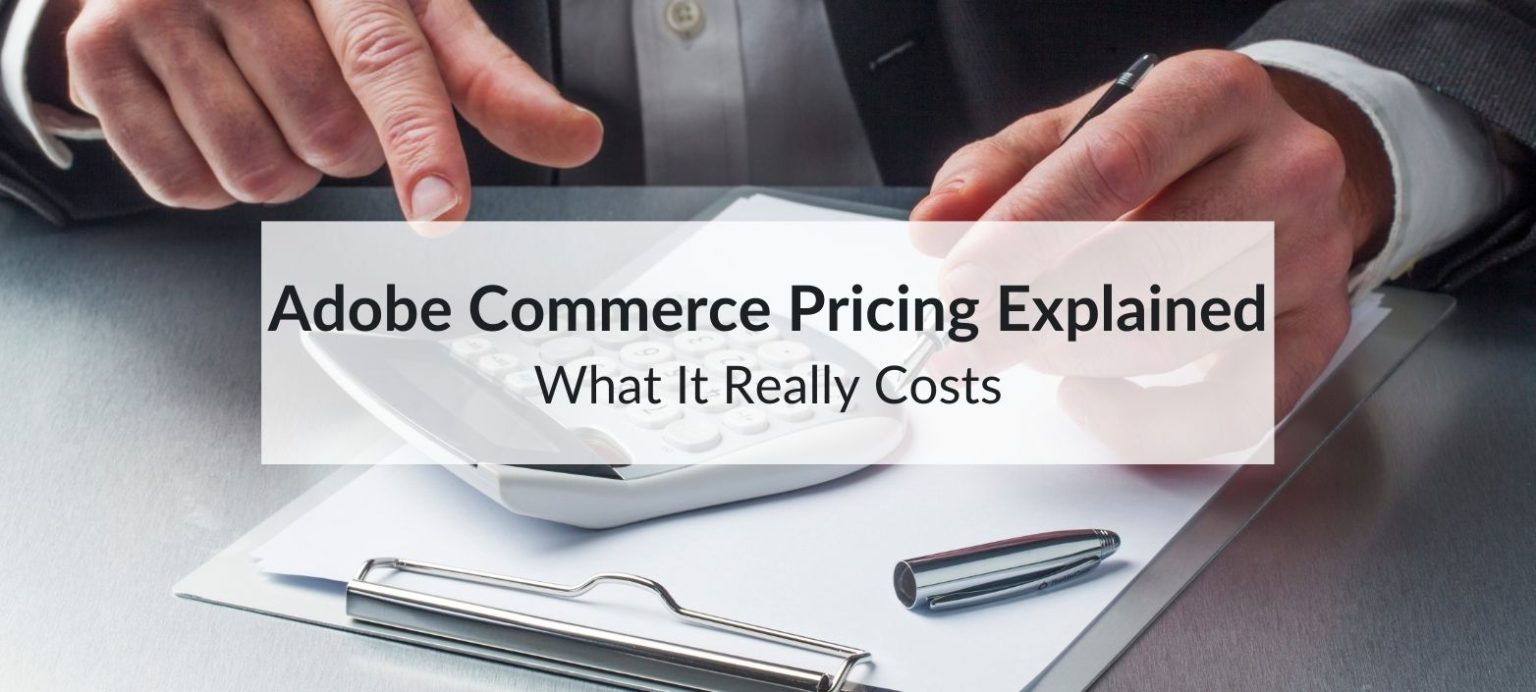Adobe Commerce pricing can vary dramatically — from £18,000 to over £150,000 per year — and that’s just the licensing fee. When the platform is evaluated by businesses, the pricing model is often seen as unclear, especially with hidden infrastructure and support costs.
This guide provides a clear breakdown of Adobe Commerce pricing across tiers, explains how different business models affect the total cost of ownership, and offers proven strategies to reduce expenses without sacrificing essential features or long-term growth potential.
Adobe Commerce at a Glance
Adobe Commerce (formerly Magento Commerce) is an enterprise-grade eCommerce platform used by retailers, wholesalers, and global brands. It’s made for businesses with complex needs, like B2B selling, custom products, managing many stores, and connecting with other systems.
Adobe Commerce Pricing Tiers Based on GMV
Adobe calculates pricing based on your Gross Merchandise Value (GMV) and Average Order Value (AOV). There is no public pricing page — you’ll be quoted based on revenue projections, business model, and support requirements.
Here’s a typical breakdown based on UK market experience:

Note: Pricing is quoted in USD by Adobe but often converted by UK agencies for planning and procurement.
What Else Adds to the Cost?
Beyond licensing, a full Adobe Commerce build and operation involves several layers:

This is where cost management becomes critical — especially if your site structure is relatively simple or your product catalog doesn’t require advanced custom logic.
Different Pricing Needs for Different Business Types
Adobe Commerce is not a one-size-fits-all platform. Below is a cost estimation model tailored to three common business scenarios:
1. Early-stage brands scaling up (GMV < £1M)
- Often better served by Magento Open Source unless B2B complexity is required.
- Expected annual cost: £25,000 – £50,000
- Recommendation: Start with Open Source and move to Commerce when scaling international or wholesale operations.
2. Medium-sized operations (GMV £1M – £10M)
- Most common use case for Adobe Commerce licensing.
- Can benefit from Cloud hosting if in-house infrastructure is limited.
- Expected annual cost: £60,000 – £150,000
- Recommendation: Evaluate which features are actively used; remove redundant modules and streamline extensions.
3. High-volume, multi-site businesses (GMV £10M+)
- Strong case for full Adobe Commerce Cloud usage.
- Requires performance tuning, scalable infrastructure, and 24/7 support.
- Expected annual cost: £150,000 – £300,000+
- Recommendation: Custom SLA, international CDN, and security reviews are essential. License negotiation is critical at this stage.
6 Ways to Reduce Adobe Commerce Pricing Without Sacrificing Performance
1. Negotiate Based on Realistic GMV Projections
Adobe often prices based on projected sales, not current figures. Use trailing 12-month GMV data, not forecasts, to anchor your license discussion. If your growth is seasonal or volatile, flag this to reduce over-commitment.
2. Host On-Premise or via a Specialist Partner
Adobe Commerce Cloud is convenient but expensive. Many agencies (like 5MS) offer secure, high-performance cloud hosting tailored to Magento, with lower infrastructure costs and more flexibility.
3. Avoid Redundant Extensions
Unnecessary modules can slow down your store, increase maintenance time, and introduce compatibility risks. Audit your extension list annually — and only pay for features that directly support your commercial goals.
4. Use a Retainer That Matches Usage
Some agencies lock you into unused support hours or fixed retainers. At 5MS, clients only pay for what they actually use — allowing better budget control over time.
5. Phase Feature Rollout Instead of Building Everything Day One
Many businesses overbuild in the first year. Instead, deploy in stages — starting with essential features and adding complexity only when data justifies it. This avoids upfront costs and reduces testing overhead.
6. Optimise Site Performance to Reduce Infrastructure Costs
Adobe Commerce Cloud scales based on site load. A poorly optimised site will cost more to host. Focus on:
- Full-page caching (Varnish)
- Proper indexing schedules
- Image optimisation
- Minimal reliance on synchronous third-party scripts
Why Most Adobe Commerce Pricing Guides Miss the Point
Many existing guides focus on listing costs without offering practical ways to control them. They often assume one pricing path for all businesses and overlook the fact that Adobe pricing is negotiable, modular, and deeply influenced by how the store is built and maintained. adipiscing elit. Ut elit tellus, luctus nec ullamcorper mattis, pulvinar dapibus leo.
A pricing conversation should always begin with your business model, current store limitations, growth targets, and technical resources — not Adobe’s published GMV brackets alone.
Our View as an Adobe Commerce Development Partner
At 5MS, we’ve supported dozens of UK and EU businesses navigating Adobe Commerce pricing. Some overpaid for features they never used. Others delayed upgrading too long, leading to expensive rebuilds.
What works best? An adaptive pricing strategy matched to actual store data and supported by modular architecture. Our clients scale faster when they focus on the right infrastructure — not just the most expensive one.
If you’re unsure what tier fits your goals, we’ll help you assess traffic, product structure, and custom needs to recommend the most cost-effective approach.
Summary Table: Adobe Commerce Pricing Breakdown

Final Thoughts
Adobe Commerce pricing can be justified if it’s configured correctly for your business. The platform has strong potential — but only when costs are aligned with usage, and development follows a modular, data-driven roadmap.
The key isn’t to chase the highest-tier package, but to understand what capabilities you actually need, and manage the rest with support from experienced specialists.

